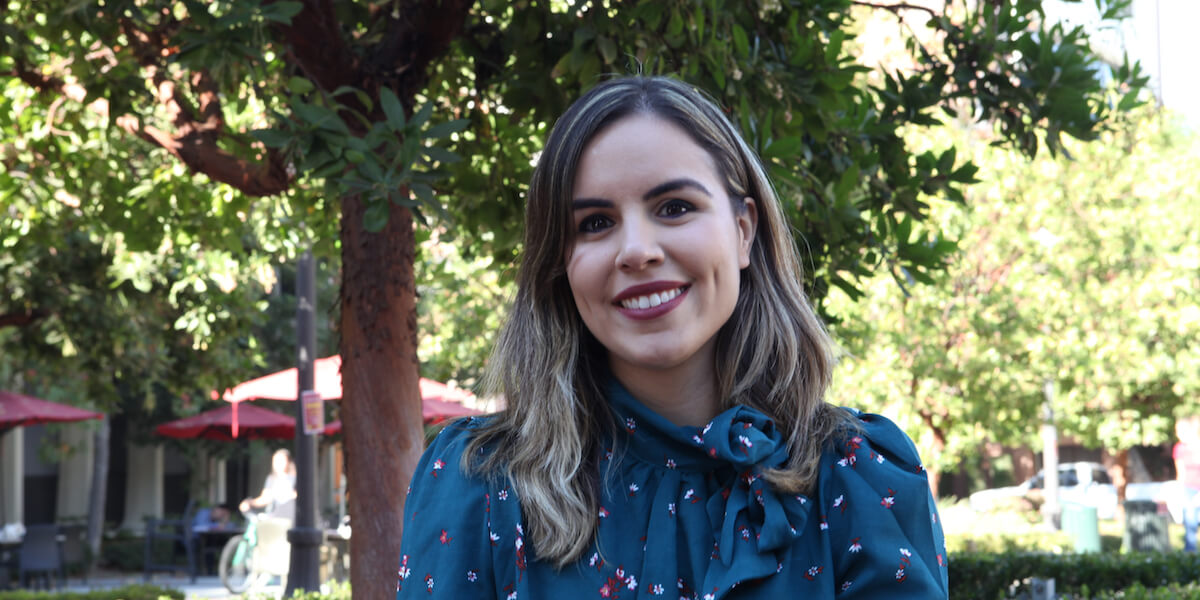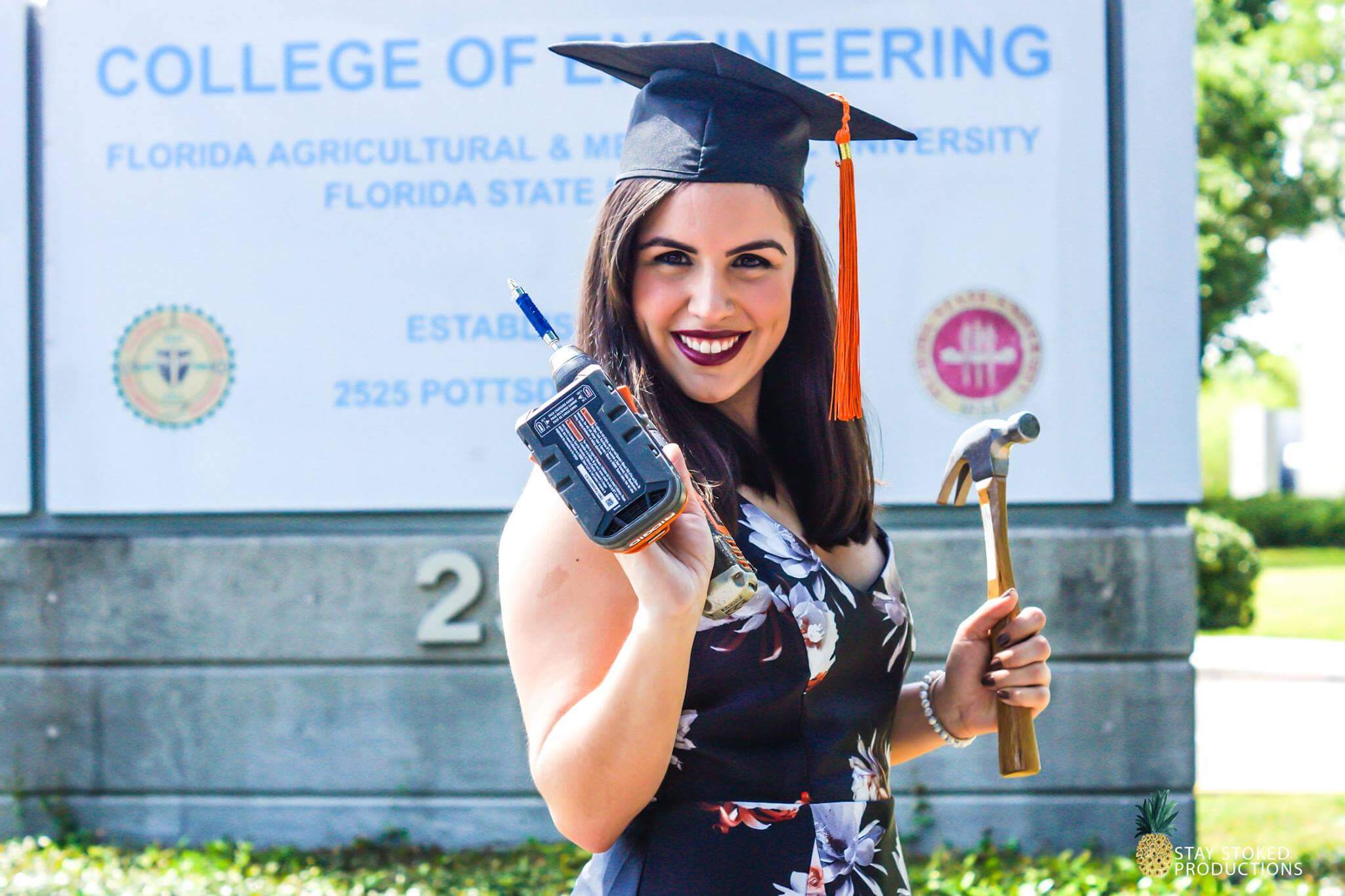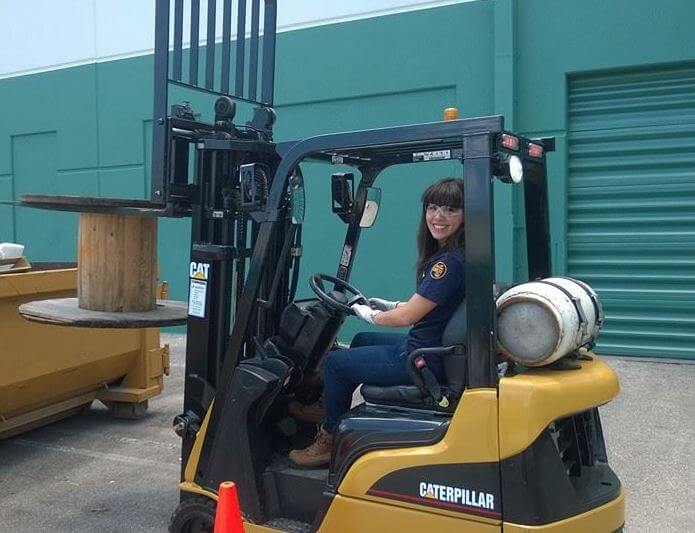
Materials researcher in the M.C. Gill Composites Center Emily Anne Vargas was honored with the regional SHPE Professional Role Model of the Year Award. Image/Emily Anne Vargas
Emily Anne Vargas gets visibly emotional as she recalls the moment she discovered she was the recipient of the Professional Role Model of the Year Award for her region from the Society of Hispanic Professional Engineers (SHPE). On the other end of the call was SHPE National Board of Directors Chair, Miguel Alemañy, a renowned engineer who played a key role in shaping some iconic products for Procter & Gamble. He told her she was the judges’ selection for her work as an eight year veteran of the organization, where she is currently SHPE National Graduate Committee Co-Chair.
Vargas immediately told her parents.
“They’re fully supportive of anything that I put my mind to, and so when I told them I got this award, they were extremely emotional,” Vargas said. “So it’s an absolute honor to be recognized.”
It has been a challenging road at times for Vargas, a PhD researcher in the Mork Family Department of Chemical Engineering and Materials Science. Particularly during the past year, as she managed her USC Viterbi workload while also navigating her SHPE role sourcing professional development and networking opportunities for members in the midst of the debilitating global pandemic.
“I’m a first generation college graduate and the first engineer in my family. So it’s uncharted waters being in graduate school, let alone an engineering discipline,” Vargas said. “It’s also hard to bring exposure to yourself and your accomplishments, because imposter syndrome tries to make its way in there.”

Vargas at her graduation from Florida State University in 2017. Image/Emily Anne Vargas
But in light of the barriers to entry in advanced degrees and engineering for the Latinx community, Vargas knew that she needed to be her own strongest advocate and was compelled to be a role model—as others had been for her.
“It was really exciting, getting that call because it also shows me that, hey, I’m making it and I can push that imposter syndrome aside, which makes it all worthwhile, especially in those days during a doctoral program where you feel like everything’s falling apart,” she said.
Vargas grew up in Miami, and engineering has been in her blood for a long time. Her fascination with materials, which is now her research specialization, came thanks to her father, Jesus, a carpenter–a coincidence that isn’t lost on her now.
“It took me 20-something years to figure out the biblical reference with that,” she laughed.
Vargas was given her first tool kit at age 8, and would accompany her father to hardware stores, where she would excitedly look at displays and ask her dad to explain the difference between real wood and particle board.
“It was basically engineering without me even realizing that it was engineering,” she said.
Vargas harnessed this ingenuity throughout her childhood. American Girl doll sets were too expensive? No problem. She could build her own toys.
“I decided to take it upon myself,” Vargas said. “I would get the American Girl catalogs and think ‘okay, I want to make this bed.’ So I would sneak into my mom’s closet and grab a shoe box and just start tinkering around with it and whatever else I could find in the house and made a furniture set,” Vargas said.
Vargas’ fascination with building and creating continued throughout her home life and education. Her father recruited her as his assistant in home improvement projects. But it was her grandfather, an accountant who came to Miami from Cuba, who encouraged her love of math.
“He taught me a lot of math to the point where we would go to a grocery store and I would calculate the sales tax before the cashier rang up the total and would give them the exact change and they always looked at me really funny, and my grandfather and I would be snickering,” Vargas said.
Vargas went on to study her Bachelor of Science in Industrial and Manufacturing Engineering at Florida State University, graduating in 2017.

Vargas during a 2014 internship with United Technologies Corporation: OTIS Elevator. Image/Emily Anne Vargas
After graduation she worked for Boeing and Eaton Corporation, but her fascination with materials led her toward graduate studies. She applied for and received a National Science Foundation Graduate Research Fellowship. She has also been honored with a GEM National Consortium Fellowship, along with The SHPE National Dissertation Scholarship, Helen Cuesta Scholarship, and the SHPE Los Angeles Professional Scholarship. Vargas now works on ceramic matrix composite materials in the lab of M.C. Gill Chair in Composite Materials Steve Nutt. This shift toward ceramics happened after a colleague pointed out to her that her eyes lit up when she talked about materials and perhaps she should consider it.
And it’s true. Vargas’ eyes do light up when she describes her work creating high performance advanced ceramic composites, which she said are changing the way we think about materials.
“When you have two materials, they have their own separate properties. But when you combine them together, not only do they have those specific properties but they take on brand new properties,” Vargas said.
“I like to give the example of the Egyptians with the pyramids. The bricks were actually made with straw, laid in different directions, which is pretty strong. But then they used other materials, which were the mud and clay to keep everything glued together. And that’s one of the reasons why the pyramids are still up to this day,” she said.
Composite materials are used in extreme and high temperature extreme environments, such as heat shields for rockets or vehicle brakes.
“What I’m working on is looking at the manufacturing process of it, how it affects the material on the micro scale–think of it like the skeleton of the material–how that affects the overall properties and the strength of the material. It’s really exciting,” Vargas said.
Vargas has been involved with SHPE since 2013, sitting on the National Board of Directors during her senior year of undergraduate studies. She’s stayed connected to the organization throughout her time working in industry, and her return to doctoral studies.
Even throughout this past year when she had to battle the technical difficulties that accompany remote working life, Vargas managed to find innovative ways for her graduate student member cohort to connect remotely. She devised engaging activities such as virtual tournaments of the popular board game Lotería, and a paint-along with Bob Ross exercise. For Vargas, finding a way to bring the real-world sense of community to the online SHPE experience was crucial.
“I drank the SHPE Kool Aid,” she laughed. “I just absolutely love the organization and the people I’ve met there are my extended family.”
Published on February 11th, 2021
Last updated on April 29th, 2022











